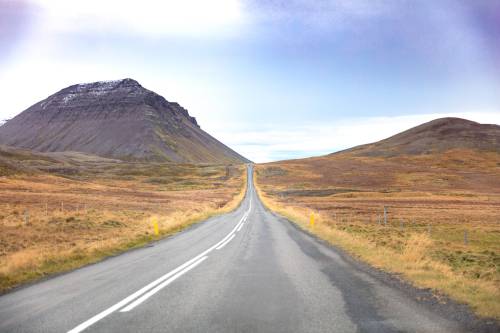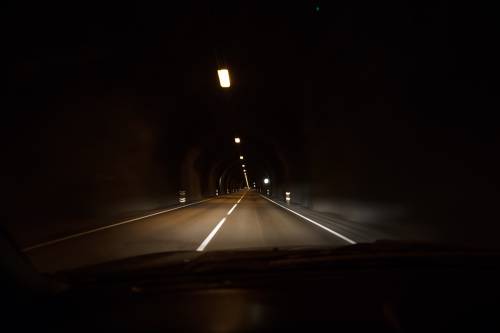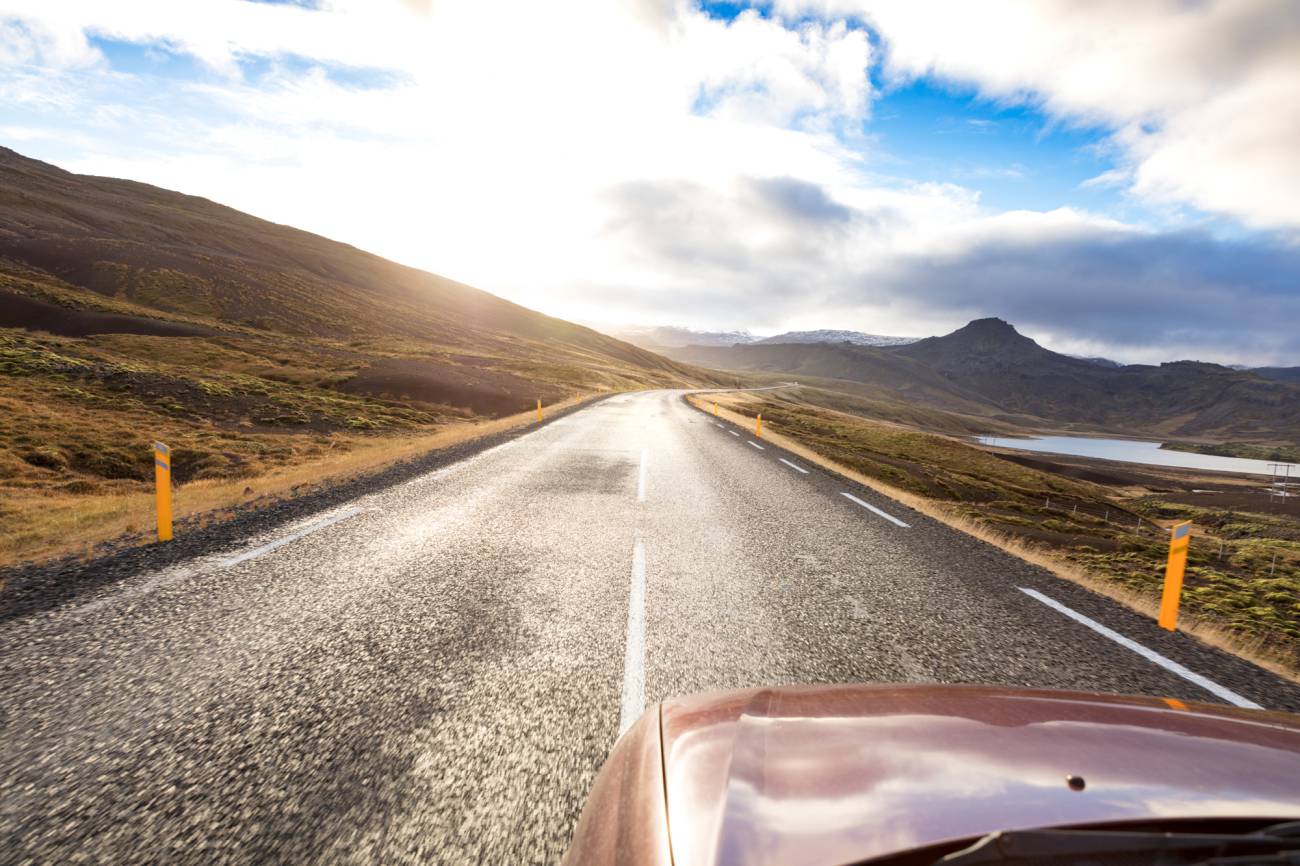Umferð {Traffic}
There aren´t very many possibilities for getting from one place to another in Iceland. You can fly from one city to the next, take local or long-distance busses, in some areas there are ferries or you can sometimes take a boat. In most cases though, you´ll travel with your own car. Some travel by motorcycle or bicycle, if the weather is fine.
There are no trains.
The international airport of Keflavík is the largest in Iceland. Almost all international flights land here. Further international airports, offering the largest number of inland flights, are Reykjavík, Akureyri and Egilsstaðir. The two national airlines Eagle Air and Air Iceland Connect fly, next to the three international airports, to national destinations in Ísafjörður, Vestmannaeyjar, Húsavík, Hornafjörður, Grímsey, Bíldudalur, Vopnafjörður, Þórshöfn and Gjögur.
Public transportation by bus is very well organized in Iceland. A first impression of this can be had shortly after arrival in Keflavík, when traveling by company FlyBus to Reykjavík. Strætó, the public transportation company is responsible for local transportation in Reykjavík and also for long-distance routes to most regions of the island. There are also many other long-distance bus companies.

Because Iceland is so spread-out and busses only travel along main routes, you often need your own car to reach your destination. On average, 7 out of 10 Icelanders own a car, which is a high percentage in comparison to other countries.
There are countless car rental companies in Iceland, offering small economy cars, from campers to off-road vehicles in all price categories.
There are 13,000 street kilometres in Iceland, of which about 4,400 kilometres are paved. On paved streets the maximum speed is 90 km/h, on dirt roads it´s 80 km/h, in towns 50 km/h and you drive on the right-hand side.
Most of the streets are passable with every type of car. For the streets in the highlands (street name marked with an F) all-terrain vehicles are mandatory because the routes are often in bad shape and sometimes you need to cross through rivers. The highlands streets are closed when it snows. The gates are normally open in Mai or June. In mid-September, by the latest, snow falls in the highlands and the gates close once again.
Traveling safely in Iceland means, constantly watching the natural surroundings. On stormy days, strong gusts can nearly blow the car off the road. On snowy days the snow is usually removed quickly, but due to the wind, the roads remain very slippery. Even though the fields are fenced, sheep and horses are often found on the street. By the side of the street you´ll find signs in regular intervals informing about the temperature and the wind speeds. On occasion main streets are closed due to sand storms. Many unnecessary accidents are proof, that the Icelandic weather is often underestimated.
It is strictly forbidden to drive off road – regardless of how tempting the alternative path might be.

Text & Images: Eva Frischling
Excerpt of the book “Lebensgefühl Island” / “Soul of Iceland”
Eva’s website
Eva’s instagram
Eva’s facebook page
A land of fire and ice, with more sheep than inhabitants, characterized by a unique nature! This is just a brief description of such a diverse country. While a volcano may erupt on one side of the country, you can hike a glacier, admire the Northern Lights, or take a bath in a hot spring on the other side of the country - at the same time.
This not only speaks for diversity, but also for spontaneity, which is also reflected in the changeable weather in Iceland. A popular Icelandic saying is "If you do not like the current weather, just wait for five minutes".
In contrast to this inconsistency, one thing is constant and that is the enthusiasm for Icelandic horses! The Vikings brought horses to the island in the 9th century.
To find out more about Iceland, you can find travelogues, reports, or interesting facts here in the UNDRA Journal!
